This article by Yulia Mizushima first appeared on Tokyo Cheapo.
Some outfits never go out of fashion. Kimonos are a prime example – they’ve been making people look elegant for centuries. These stylish rags certainly aren’t cheap though – unless you know where to look…
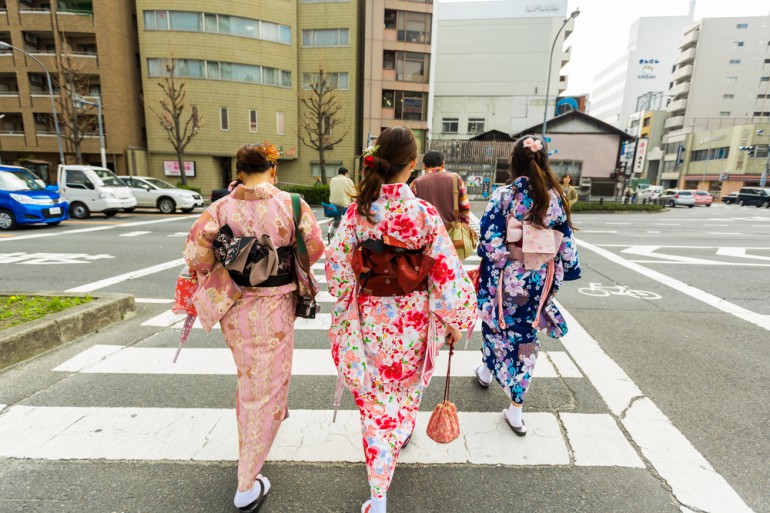
Kimono girls image via Shutterstock
If you stand in the middle of a scramble at Shibuya crossing, how many internationally-renowned, high-fashion outfits can you spot? I bet it wouldn’t take even a minute to spot at least a dozen without turning your head. Tokyo might be glorified as a fashion capital of the world, but no matter how “it” the handbag or how tailored the suit, chances are there’ll be someone else with the same outfit somewhere nearby. Next time, before you waste money on another unfulfilling retail therapy session, think about checking out your local second-hand kimono shop instead.
In today’s fashion world where unique stands above all, what’s more exclusive than the kimono? Leaders of the time-honored industry have traditionally catered to the status-conscious elite, but modern-day kimono designers and manufacturers are having a hard time selling what typically costs thousands of dollars to anyone who isn’t a refined and wealthy middle-aged Japanese woman. As a result, while most of today’s kimono industry is struggling to stay above water, budget second-hand shops are gaining popularity.
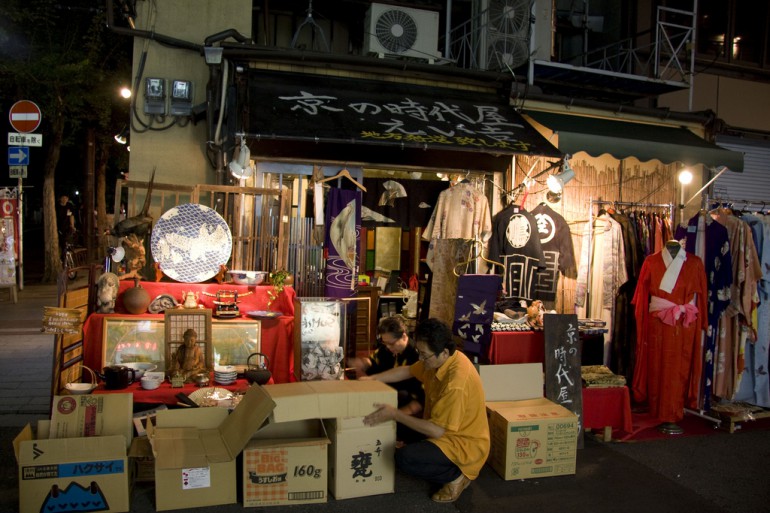
Local furugiya. Image by Chris Gladis, used under a Creative Commons Licence
You can pick up an authentic kimono for $100 or under, if you rustle around the right places. Your local furugiya (the name for a second-hand clothing store) is your first stop when looking for kimonos at an affordable price.
If you don’t know where to look, don’t stress — a lot of second-hand kimono shopping can be done online. Rakuten’s kimono page is a cheap, mix-and-match stop for easy access to inventory from hundreds of shops from all over Japan. it also gives you a quick and informative overlook of the different types of kimono and accessories out there. Random fact — Rakuten apparently is responsible for a full 10% of the kimono industry’s sales these days. Kimonos on Rakuten range from below a hundred dollars up to a couple of thousand — keep an eye out for special deals.
Another competitive option is Ichiroya, an online flea market that sells genuine, family-owned kimonos from Osaka, Kyoto, Nara, and Kobe, with the goods ranging from vintage to practically new. Their kimonos cost anything from 28 to 1 800 dollars, but most seem to range in the low hundreds. They have a handy Youtube page with short guide videos on kimono purchasing and wearing too.
If you can speak decent Japanese and are more inclined towards brick and mortar shops, any of the numerous Tansuya stores are ideal places to score a routinely-offered discount, as well as face-to-face kimono dressing assistance. A popular chain that sells new and recycled kimonos, Tansuya is a go-to choice for both kimono experts and newbies. Their prices are known to be a bit higher; second-hand kimonos usually cost a couple of hundred dollars, but if you’re just after the experience, you can rent one for around ¥8,000 a day. Depending on the branch, you can complement your shopping by exploring Japanese tea culture at the historic tea house district in Kagurazaka, ride a rickshaw in Asakusa, or do a bunch of equally cool stuff near the 38 other stores scattered around Tokyo.
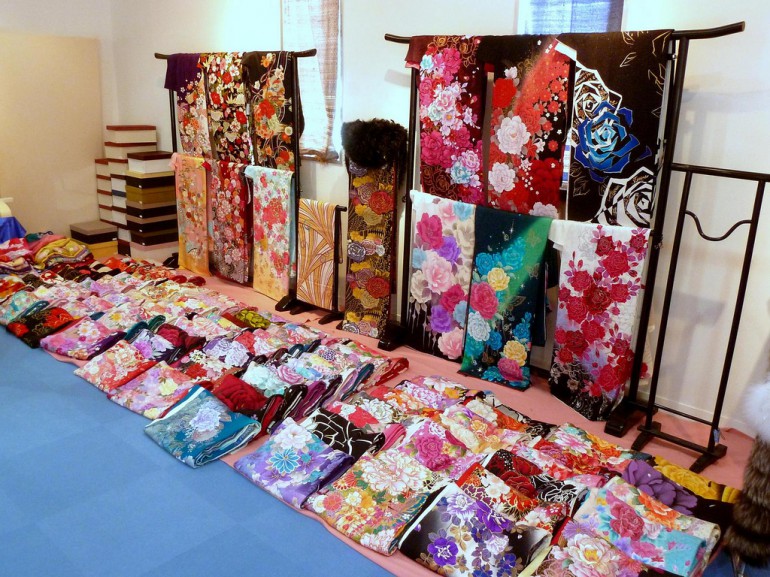
Inside a kimono shop. Image by Okinawa Soba, used under a Creative Commons licence
Lastly, my favorite second-hand kimono shop is only a five-minute walk away from JR Harajuku Station. The family that has been running Sakaeya for over 50 years is now on Facebook and Tumblr (in English), making their social media a great place to start your kimono quest. The ultimate in cheapo kimono, Sakaeya not only sells second-hand kimono for as low as ¥1,000 (yes, you read that right), they also rent starting at ¥5,000, which includes dressing assistance and a tea ceremony. For a little extra, you can join their dance and photo shoot events as well. Plus, their CEO is an adorable cat named Totoro and their bucho, or department chief, is a raccoon who lives at the nearby Meiji Shrine. Why aren’t you trying on a kimono already?
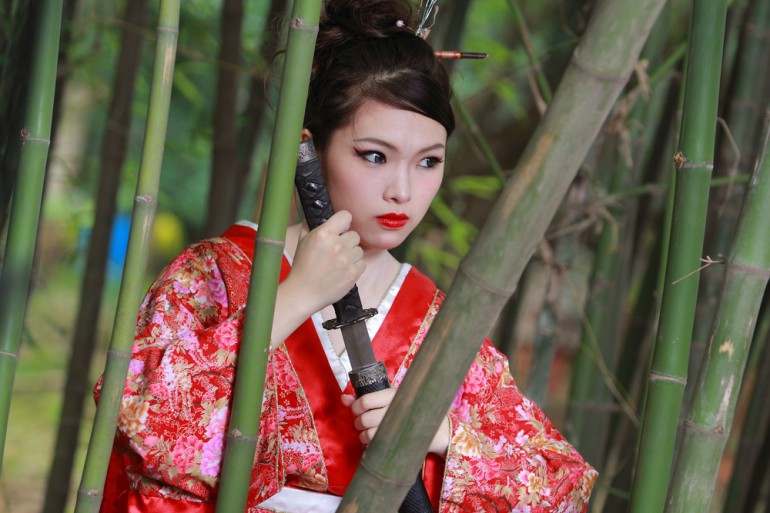
Ed’s note: Once you’ve got your cheapo kimono, all you need is a sword and bit of bamboo to complete your experience. Death stare optional. Woman in bamboo forest pic via Shutterstock.

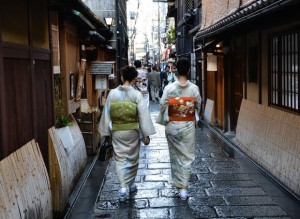
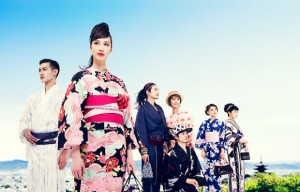





















1 Comment
Good evening.
i’m ciani from indonesia
please give me an information how much the price of kimono??? and if i interest so do you can to send it to indonesia??
Arigatou Gozaimasu